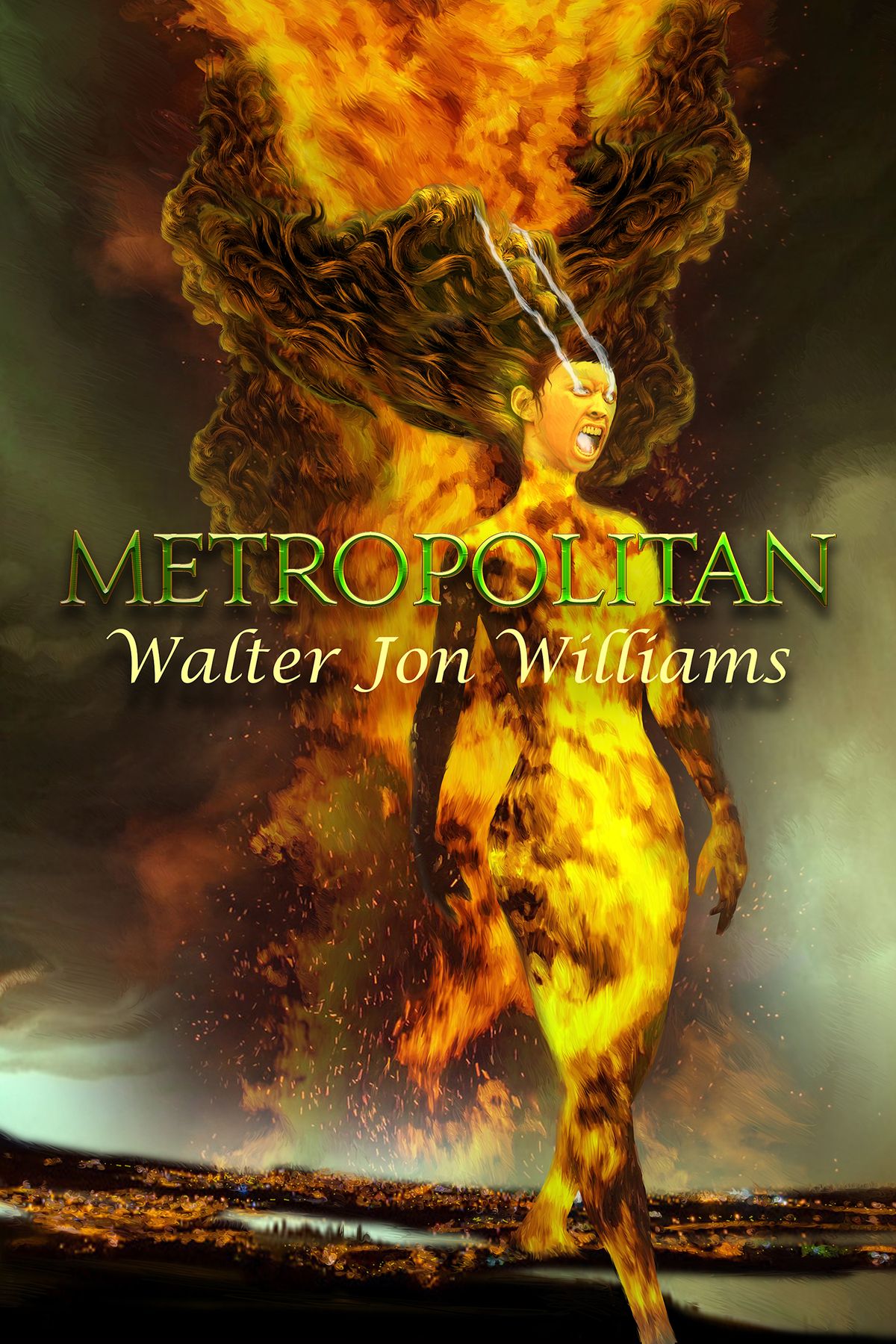Metropolitan

Review
Metropolitan, by , is the first book in the Metropolitan series. It is the story of Aiah, a young woman who discovers an illegal source of magical plasm, and how it draws her into conflict with the world.
Metropolitan is an urban fantasy novel set in a city that covers the Earth. Its structure, mass, and geometric layout generate plasm—an electricity‑like substance mages need to power their spells. The setting is the far future, like ’s The Book of the New Sun, but unlike ’s work, this world still has modern technology—skyscrapers, subways, computers, cars—and magic that feels systematic, almost technological.
The story follows Aiah, her family, and her people, who are refugees from their destroyed metropolis. They’re people of color, living as second-class citizens in a white-run city, preyed upon by both the government and organized crime. Aiah has climbed precariously into the middle class, a position that earns her resentment from society for rising too far, and from her family for leaving them behind. It feels like a tale set in an immigrant neighborhood in 1980s Brooklyn—until you remember Aiah is a mage. That a ten‑story‑tall flaming woman leveled Wall Street. That ghosts haunt the power lines. That a glowing shield encases Earth, imprisoning all humanity.
The best thing about Metropolitan is the subtle world‑building scattered throughout, much like ’s The Tainted Cup. The plot builds steadily: first Aiah figures out how to profit from an illegal plasm well while hiding it from the authorities, then she’s swept into a revolution that could reshape the world order.
The characters are the weakest part, though still well written. Aiah makes selfish choices—true to her character—but that kept me from fully enjoying reading about her. The supporting cast is large; a few feel clichéd, but most are engaging and memorable. The most exciting character is Taikoen, the hanged man. Once human, now a plasm ghost transformed by overexposure, he’s the terrible secret behind the revolution’s success.
One of the central themes of the book is freedom and its cost. Aiah feels stuck in her dead-end job that doesn’t quite pay the bills, and she is willing to steal plasm to escape. Constantine rebels against the oppressive governments of the city. Taikoen is bound to his ghost-form; he possesses and kills others to temporarily be human again. Humanity itself is trapped on Earth by the shield. There is a motif of flight—especially the peregrine falcon—that reinforces the theme of freedom.
Metropolitan reminded me of several other works:
-
The in‑world ads that separate sections are similar to the in-world narrative breaks in ’s Stand on Zanzibar.
-
The pneumatic tube messaging system at Aiah’s workplace is like the infofiches in ’s A Memory Called Empire.
-
The dolphins fighting for freedom are reminiscent of those in ’s Startide Rising, even if the ones in this book are likely modified humans.
-
The blend of magic, technology, and revolution echoes Final Fantasy VI and Final Fantasy VII. Mako is similar to plasm, although Mako’s extraction destroys the planet while plasm’s is more benign.
-
The ghostly voices in the background of Aiah’s calls are like the entroponetic interference on the intercom in Disco Elysium.
-
The final battle, where mages and attack helicopters share the battlefield, reminded me of a Shadowrun session.
leaves many questions unanswered: What is the shield, and why was it erected? How will Aiah and Constantine control Taikoen? Will the revolution’s ideals be corrupted as they turn towards governing? I hope I find out in City on Fire.